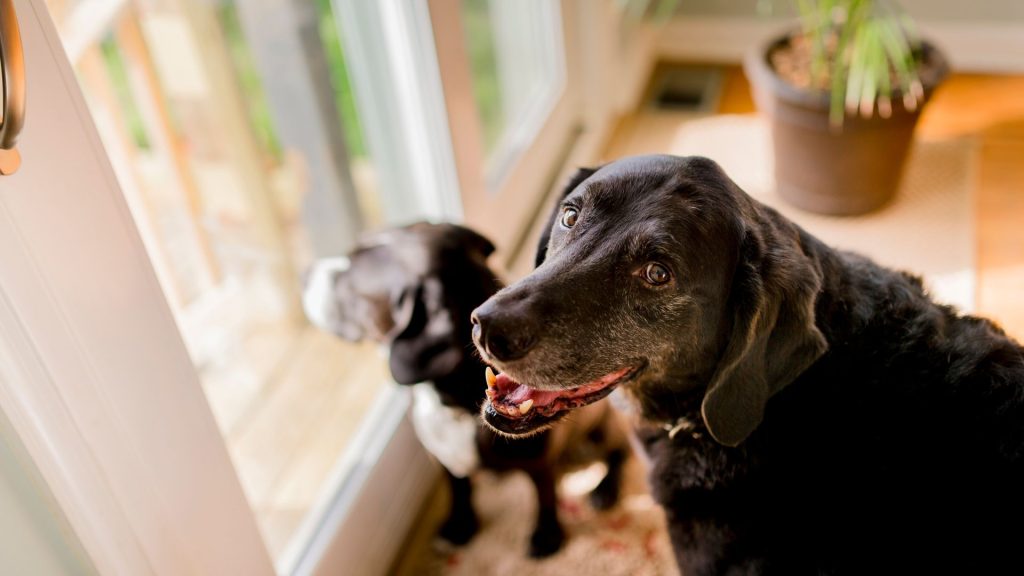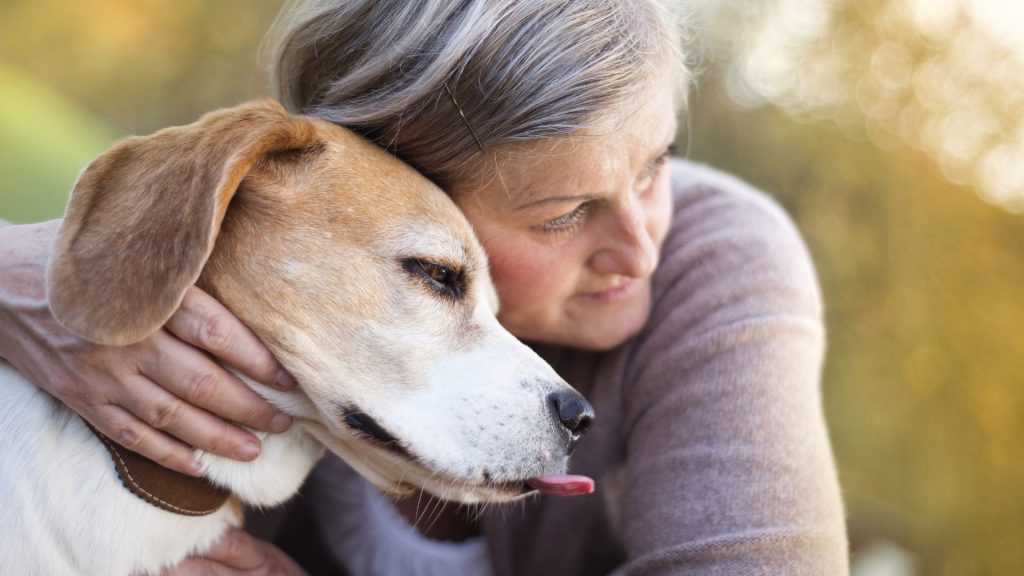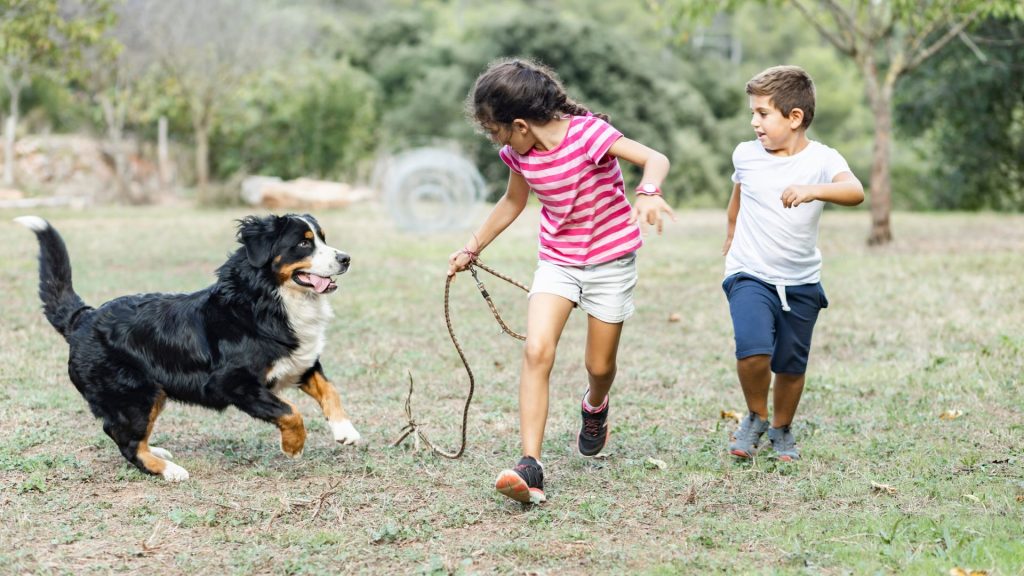As Christmas nears, many Australian families eagerly think about adding a new, furry member to their homes. This season brims with excitement about welcoming a dog, yet it’s important to thoughtfully consider the right breed choice.
Post-holiday trends in Australia show a worrying increase in dog surrenders to shelters, especially from late January to February. This often stems from new owners not choosing a compatible dog for their life and not fully realising the long-term commitment and care a dog requires.
Choosing the right dog breed involves more than just falling for a puppy’s charm; it requires careful thought and planning. It’s about finding a breed that not only suits “What’s a good dog breed for me?” but also considers “Which breed fits well with my lifestyle?” or “Is this breed appropriate for an apartment, a family with kids, or for keeping up with my active routine?”
The process of selecting the perfect dog means understanding each breed’s unique needs, temperament, and energy levels. For example, a dog for a small apartment should be comfortable in compact spaces with moderate exercise, whereas active individuals might prefer a breed that thrives on energy and endurance.
Consider Lifestyle and Energy Levels
When considering a new dog, it’s vital to ensure their energy levels and lifestyle needs match yours. It’s more than picking a breed; it’s about choosing a companion whose temperament and daily energy align with your life.

Active Dog Breeds for Energetic Lifestyles
If your idea of a good time involves morning jogs, hiking on weekends, or engaging in outdoor activities, an active breed might be right up your alley. Breeds like Australian Shepherds, Border Collies, and Labradors thrive on physical activity and mental stimulation. They’re not just pets; they’re your partners in adventure, requiring regular exercise to stay happy and healthy.
Lower-Energy Dog Breeds for Relaxed Living
On the flip side, if your lifestyle is more about quiet evenings, leisurely walks, or if you live in a smaller space like an apartment, a lower-energy breed might suit you better. Breeds such as the Cavalier King Charles Spaniel, English Bulldog, or Basset Hound are known for their relaxed demeanour. They cherish lounging around and short, gentle walks, making them perfect for a more laid-back lifestyle.
Time Investment: Beyond Dog Walks and Playtime
Beyond just the daily walks, think about the time required for training, socialising, and just plain bonding with your dog. Puppies, irrespective of the breed, will demand more time in training and socialising. Similarly, some breeds may require more mental stimulation than others to prevent boredom and associated behaviours like chewing or digging.
Selecting a dog that aligns with your lifestyle in terms of energy levels is essential not just for your own ease and comfort, but also for the dog’s wellbeing. An energetic dog may become restless or develop behavioral problems in a less active environment. A calmer dog could be overwhelmed in a very active home. The goal is to achieve a balance where both you and your dog can enjoy a life together.
The Importance of Researching Dog Breeds
Embarking on the journey of selecting the right dog breed is akin to opening a book filled with diverse characters, each with its own story. Different breeds come with their unique temperaments, sizes, care requirements, and health predispositions. Thorough breed research is key to finding a dog that truly fits your lifestyle

Understanding Breed Personalities
Each breed has a general temperament, which can greatly influence your daily life with your dog. Some breeds are known for their loyalty and protective nature, ideal for families looking for a guard dog. Others are gentle, patient, and great with children, making them perfect family pets. And then there are those breeds known for their independent nature, suitable for people who prefer a less clingy companion.
Health and Lifespan
Some breeds are prone to specific health issues. For example, larger breeds can be susceptible to hip dysplasia, while brachycephalic breeds (like Bulldogs and Pugs) may have respiratory issues. Understanding these predispositions helps in preparing for potential healthcare needs and the lifespan of the breed.
Dog Grooming and Shedding Needs
Grooming requirements vary significantly across breeds, and this includes shedding. Breeds with longer coats like the Shih Tzu or Collie not only require regular grooming but also tend to shed more, necessitating frequent cleanups at home. On the other hand, short-haired breeds like the Boxer or Beagle are generally lower maintenance in terms of grooming and may shed less. However, it’s important to note that even short-haired breeds can shed, and some, like Labradors, are known for their significant shedding despite having shorter coats. Understanding a breed’s shedding tendencies and grooming needs will help you prepare for the time and effort required to maintain a clean and healthy environment for both you and your dog.
Understanding Mixed Breeds
If a mixed breed dog has caught your eye, try to learn about the traits of the predominant breeds in the mix. Mixed breeds can inherit any combination of traits from their parent breeds, so having a broad understanding can help set your expectations.
Space and Living Environment: Matching Your Dog to Your Habitat

The space you live in and the environment you can provide are pivotal factors in choosing the right dog breed. It’s essential to realistically assess your living situation and how it aligns with the needs of different dog sizes and breeds.
Size of Living Space
he amount of space you have at home plays a significant role in determining the most suitable dog breed. Larger or high energy breeds generally require more room to move, play, and stretch out. If you live in a spacious home with a backyard, you might comfortably accommodate breeds like Golden Retrievers, German Shepherds, or even Saint Bernards. Conversely, smaller spaces like apartments or units with limited outdoor areas are generally more suited to smaller breeds such as Terriers, Dachshunds, or Toy Poodles.
Access to Outdoor Areas
Even if you have a smaller living space, access to outdoor areas can greatly influence your breed choice. If you have a safe, enclosed backyard, it offers a great play area for your dog, particularly if you choose a more active breed. This space is essential not just for exercise but also for their mental stimulation and well-being.
Proximity to Parks and Walking Paths
If your living space doesn’t include a large outdoor area, the proximity to parks, walking paths, or dog-friendly beaches becomes even more important. Breeds that require regular, vigorous exercise will benefit from living in an area where they have easy access to such spaces. Regular visits to these areas are vital for their physical health and socialisation.
Urban vs. Rural Living
The type of area you live in – urban or rural – also influences the suitability of different breeds. Some dogs adapt better to city living due to their size or temperament, while others thrive in more open, less crowded spaces.
n summary, when considering which dog to bring into your home, it’s not just about whether you want a big or small dog. It’s about ensuring the breed’s size, energy level, and exercise needs can be comfortably accommodated in your living environment. This consideration is key to a harmonious living situation and the long-term happiness of both you and your new canine companion.
Long-Term Commitment: Embracing a Lifetime of Companionship
Welcoming a dog into your home is more than a seasonal celebration or a temporary joy; it is a commitment that spans the many years of your dog’s life. Before making this significant decision, it’s important to consider not only your current situation but also your long-term plans and how a dog would fit into these scenarios.

Understanding the Lifespan of Dog Breeds
Different breeds have varying lifespans, with many dogs living upwards of 10-15 years, and some smaller breeds even surpassing that. This long-term commitment means you will be responsible for their health, well-being, and happiness for a considerable part of your life.
Plan For Future Life Changes
Life is dynamic and can bring various changes over the years, including moves to new homes, career changes, or growing your family. Consider how a dog would fit into these potential changes. For instance, if you might move internationally, consider the challenges and costs of moving a pet overseas. If you’re planning to start or expand your family, think about how a dog would interact with children and the adjustments that might be necessary.
Understand the Long Term Financial Costs of a Dog
Owning a dog comes with a financial commitment that includes food, healthcare, grooming, and other unexpected expenses. It’s essential to consider whether you’re prepared for both the predictable and unforeseen costs throughout the entirety of your dog’s life. As dogs age, their health care needs can become more complex and costly. It’s important to consider whether you’re prepared for the responsibility of caring for a senior dog, which may include managing chronic health conditions or mobility issues.
Career and Lifestyle Considerations
The aspect of career and lifestyle plays a pivotal role in ensuring that you can provide a stable and nurturing environment for a dog. A significant trend observed during the COVID-19 pandemic was the increase in dog adoptions as people spent more time at home. However, with the transition back to office-based work, many dog owners found themselves unprepared for the challenges this posed, contributing to increased surrender rates. Your career and lifestyle choices will significantly affect your ability to care for your dog. If your job requires long hours or frequent travel, consider the impact on a dog and how you may manage these changes.
In essence, choosing to bring a dog into your life is a decision that extends far beyond the initial excitement of adding a new member to your family. It’s about considering the years ahead and ensuring that, through every change and phase of life, you can provide a loving, stable, and nurturing environment for your canine companion. This long-term perspective is crucial in making a responsible and fulfilling decision that aligns with both your and your dog’s future.
Meet Potential Dogs: The Importance of Personal Interaction
One of the most rewarding and enlightening parts of the process of getting a new dog is the opportunity to meet and interact with potential canine companions. Whether you’re adopting from a shelter, a rescue organisation, or considering a dog from a breeder, spending quality time with them before making your decision is crucial.

Multiple Shelter Visits
If you’re considering adopting from a shelter, it’s wise to visit multiple times. Dogs can behave differently depending on various factors like the time of day, their comfort level with new people, or their current mood. Multiple visits can give you a more comprehensive picture of the dog’s typical behaviour. Understanding a dog’s history, if available, can also be informative. For shelter dogs, knowing their past experiences, if they were surrendered or found as strays, and any noted behavioural traits can help you make an informed decision.
Asking Questions about the Dog
When visiting shelters or rescues, take the opportunity to inquire about the dog’s history. Understanding whether the dog was surrendered, found as a stray, or has faced past trauma can be crucial in understanding their behavior and needs. Ask about any known health issues and how the dog behaves around people and other animals to assess their level of socialization and compatibility with your lifestyle.
If you’re approaching breeders, it’s important to ask to see the puppy’s parents, as this can offer insights into the puppy’s future size, appearance, and temperament. Inquiring about any hereditary health issues in the breed line and asking for health clearances are key steps in ensuring the puppy’s well-being. Additionally, understanding what kind of socialisation experiences the puppies have had will help you gauge how well they might adapt to your home.
Observing Interaction and Assessing Compatibility
When meeting potential dogs, it’s crucial to closely observe how they interact with you and those around them. This scrutiny should extend to their behavior around a diverse range of individuals and animals, including strangers, children, and other pets, especially if these are elements of your current or future lifestyle. It’s not uncommon to find dogs that are wonderful with adults but may show discomfort or unease around children. Similarly, a dog’s social demeanor with humans doesn’t always translate to friendliness towards other dogs, with some exhibiting signs of aggression or fear.
During your visits, take the opportunity to gauge the dog’s energy levels and overall temperament, seeing how they align with your lifestyle. Even with extensive breed research, remember that each dog is an individual with its own personality. A mismatch in energy levels, where a dog is either too high-energy or too subdued compared to your own lifestyle, can potentially lead to compatibility challenges as you integrate them into your daily routine.
This stage of the process is about more than just observing; it’s about envisioning the dog as part of your life and ensuring that their personality complements your own. A successful match is one where both you and the dog feel at ease and connected, paving the way for a harmonious relationship.
Trust your Instincts
The connection you feel with a dog can often be a strong indicator of your future relationship. The right dog for you should feel like a natural fit, making you comfortable and happy from the outset. If you have any doubts or specific concerns, consider enlisting the help of a veterinarian or a dog behaviourist. They can provide professional insights into the dog’s health and behaviour, offering a more comprehensive view.
Final Thoughts on Choosing a Dog Breed
Remember, bringing a dog into your life is not a decision to be made lightly or impulsively, especially during the holiday season. It’s a commitment that extends for many years, influencing and enriching every aspect of your daily routine. The right choice will bring immeasurable joy and companionship, while an ill-considered decision could lead to challenges and heartache for both you and the dog.
Therefore, as you contemplate adding a furry member to your family, take the time to reflect on all these aspects. Choose a dog that aligns with your lifestyle, energy levels, and long-term plans. Ensure your living environment is conducive to the breed you have in mind, and most importantly, establish a connection with the dog before making the final decision.
By making a choice that is as informed as it is heartfelt, you ensure that the joy a dog brings to your life extends far beyond the holiday season and blossoms into a fulfilling, lifelong companionship. This Christmas, let your gift to yourself and your future canine companion be the gift of thoughtful consideration, ensuring a happy home for years to come.







